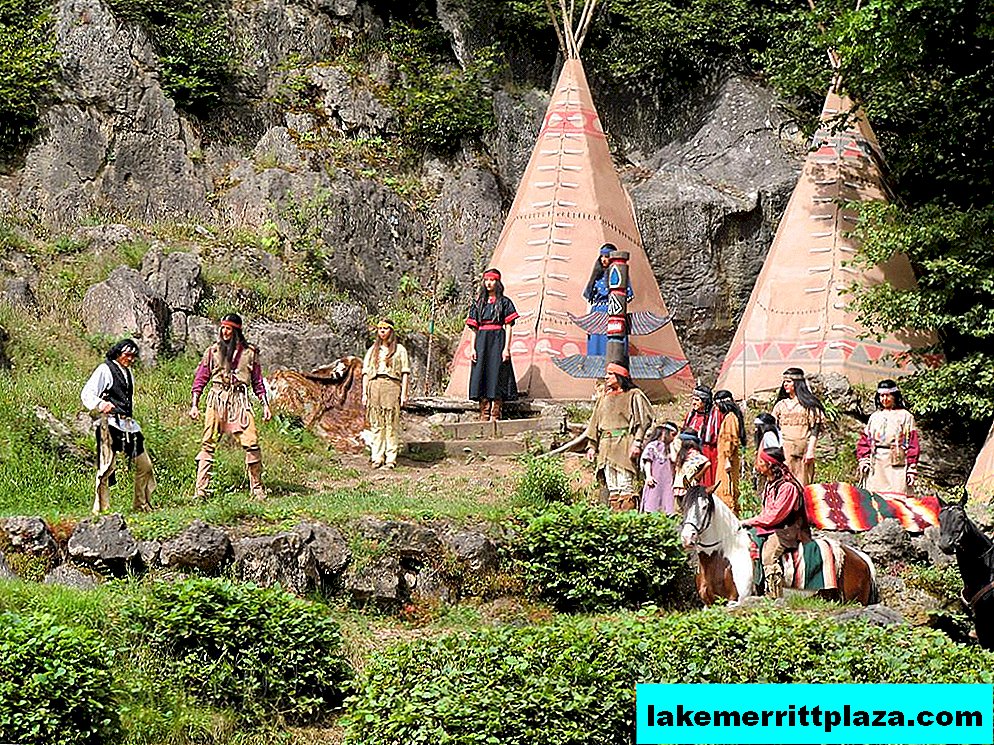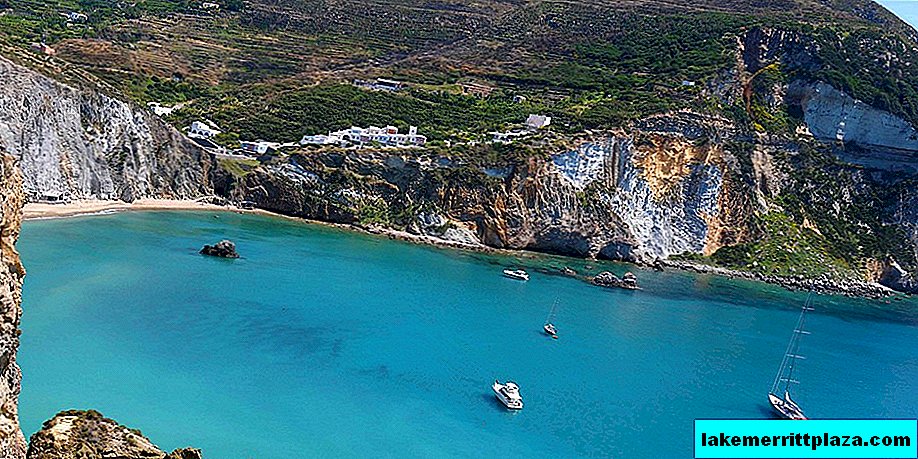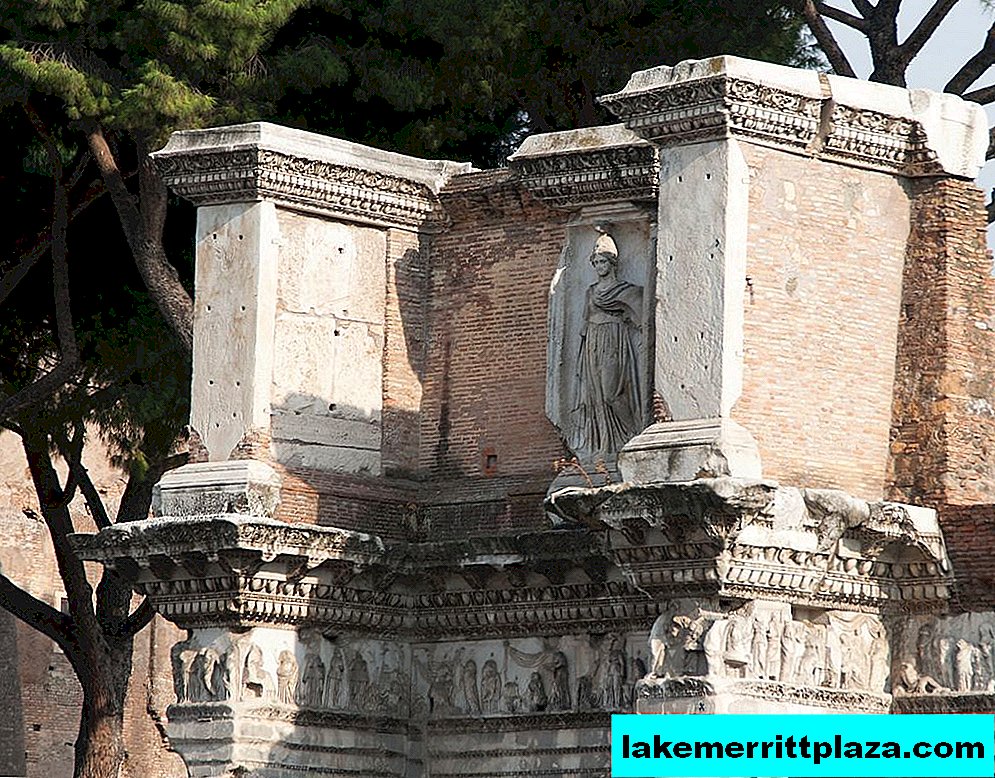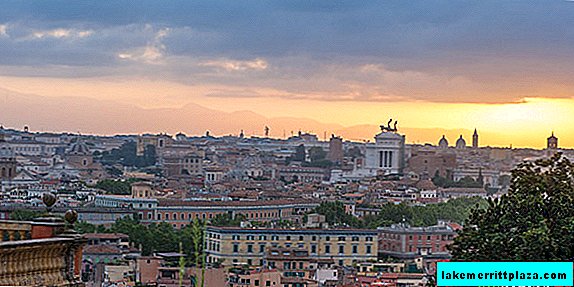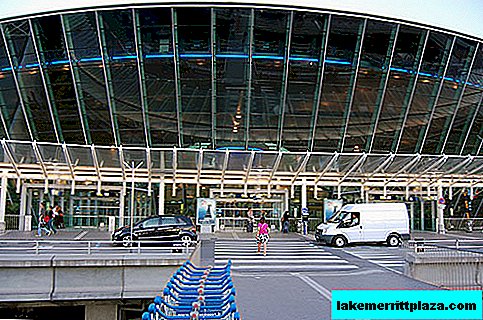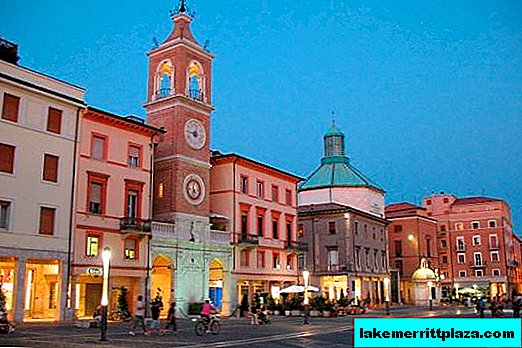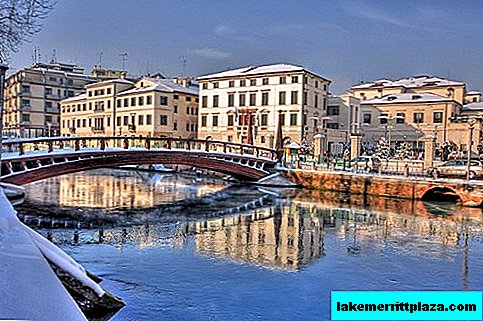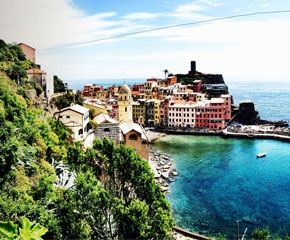In Rome, there are many interesting places worthy of tourists' attention - the Colosseum, St. Peter's Basilica, Villa Borghese, Trevi Fountain, Pantheon and other famous attractions. But we will not talk about them, but about places that are not mentioned in the usual guides to the Eternal City. Our guide to Rome is for those who are tired of traditional excursion routes: tireless travelers looking for unusual places and longing for new experiences.
Square Coliseum
The palace of Italian civilization, or the Square Coliseum, actually has nothing to do with the Coliseum. This massive building was built during the reign of Mussolini in the early 40s of the last century. It was supposed to finish construction by the beginning of the World Exhibition, which demonstrated the technical achievements of mankind, but because of the Second World War the event was canceled and the palace was left out of work.
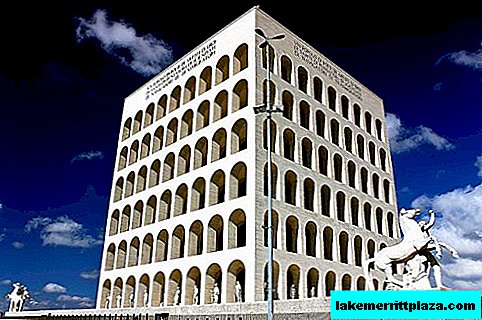
The height of the pseudo-coliseum erected at Mussolini is 68 meters
The pseudo-coliseum is a heavy square construction 68 meters high with a facade trimmed with marble and travertine and decorated with arches, which are located in six rows. At the corners of the podium on which the building stands equestrian statues are placed, somewhat softening the oppressive impression.
The second Roman coliseum is rarely found in Rome guidebooks. Unlike the antique, it is not well known to anyone, despite the fact that it appeared in the films “The Temptation of Signor Antonio” Fellini, “Equilibrium”, “The Last Man on Earth” and is even present in the “Hudson Hawk” with Bruce Willis. Not so long ago, the Square Coliseum was restored and it housed the exhibition "Made in Italy", the Museum of Audiovisual Media and a disco.
Cinechitt Film Studio
The famous Italian film studio Chinechitt, included in our Rome guide, was formed in 1937 - during the reign of Mussolini. In the first six years, 300 films were made at the Italian Dream Factory; during the Second World War, the movie studio worked half-heartedly, and by the end of the war it stopped working altogether - for some time the building was a refugee camp.
The new heyday of the Cinechitt film studio fell on the 50s of the last century - with the aim of reducing the cost of production, American film companies moved here. Cult films such as Ben Hur, War and Peace, Sweet Life, Roman Vacations, and the good half of Cleopatra with Elizabeth Taylor and Richard Burton were shot here. The main symbol of the film studio is Federico Fellini: he made 23 films here, five of which received the Academy Award.
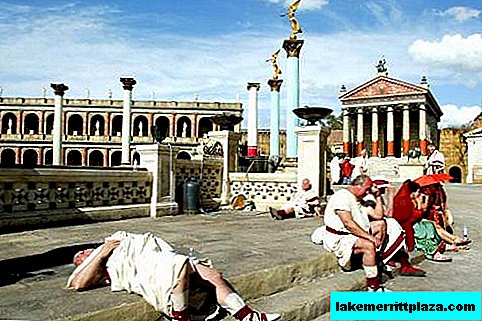
Roman Cinechitta - one of the largest film studios in Europe
Despite the economic crisis that hit the studio in the 80s, as well as the fire that occurred in 2007, Chinechitta remained afloat and is now one of the largest European film studios.
A few years ago to get on cinechitt film studio it was almost impossible, today excursions are allowed on the set. There is a museum at the film studio, the exposition of which is dedicated to film production - here you can learn about the secrets of writing scripts, features of makeup and special effects.
Church of Santa Maria Della Conzionie
In the central part of Rome, near the Barberini Palace, is the church of Santa Maria Della Concezione, built in the 17th century by the Order of the Capuchins. The interior of the church is decorated with paintings by Caravaggio, Domenichino, Guido Reni and Pietro da Cortona, but they do not make an indelible impression on visitors. The crypts decorated with mosaics from human bones are most striking.
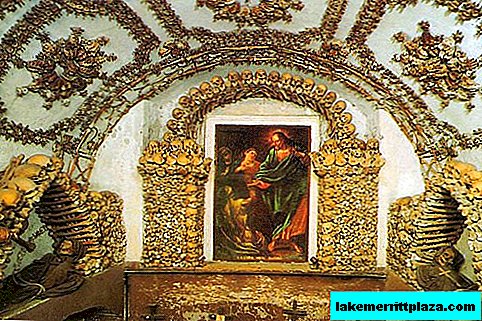
Crypts of the basilica decorated with mosaics of human bones
For the decoration of the six halls, the remains of four thousand monks brought from an ancient cemetery located on the site of the current Trevi Fountain were used. Such an unusual use of human remains suggests that believers of past centuries were not at all afraid of death, believing that it was not unnatural life.
Photography and video shooting in the church of Santa Maria Della Concezion are strictly prohibited.
Basilica of San Paolo Fuori le Moura
San Paolo Cathedral is one of the four great Roman basilicas, but it is located in the southern part of the city, outside the historic center. Due to some distance from the hiking trails in the Basilica of San Paolo, there are rarely tourist invasions, which allows you to calmly and without haste to examine the cathedral itself, the museum, and the pinakothek.

Basilica of San Paolo Fuori le Mura in Rome
The Basilica of San Paolo Fuori le Mura was built at the burial place of St. Paul. The building was erected in 324 by Emperor Constantine. Each next ruler considered it his duty to rebuild, or at least decorate the cathedral: an altar was built over Paul’s grave, then a chapel was attached, and in the 9th century the basilica was surrounded by a fortified wall with towers to protect against raids.
Today the Basilica of San Paolo is a magnificent building with a mosaic facade, which depicts the figure of Christ surrounded by the apostles Peter and Paul. The outer courtyard of the cathedral is surrounded by columns, and in its center stands a statue of St. Paul holding a book in one hand and a sword in the other.
Gelateria Fassi
Our makeshift Rome guide It would be incomplete without gelato, because Italy is famous not only for the best pizza in the world, but also for the most delicious ice cream. You can make sure of this by visiting the oldest Roman gelateria Fassi, located in the Palazzo Freddo, a few steps from the metro station Vittorio Emanuele.
The history of gelateria began with the usual ice cream cart that was transported through the streets of Giovanni Fassi. The talented pastry chef started with a regular ice cream, then lemon and coffee ice cream appeared. For the rest of his life, Giovanni could have traveled around the streets of the Eternal City with a trolley, if not for fate in the person of Vittorio Emmanuele II, who liked ice cream so much that he allowed the gelateria to be opened in the Freddy's Palazzo.

The history of gelateria began with a regular ice cream cart
Since 1880, three generations of owners have succeeded in the Fassi gelateria, who have managed to maintain the established traditions - ice cream is also served in the form of three balls with different tastes, and crackers with the inscription Giovanni Fassi are always put in the vase. Only the variety of tastes has changed, along with the traditional pistachio, chocolate and fruit ice cream, goodies appeared with the taste of Fanta, Coca-Cola, Beilis, Irish whiskey, etc.
By the way
Another way to discover something new in Rome is to hire a guide. At one time, this was how I met the Eternal City from another side, previously unknown to me. The excursion program in Rome is very eventful, and if you have the time and desire, then find out more about it - it's worth it. Fortunately, information on this subject is abundant on the Internet. You can also always go for a list of excursions to Lele, an expert on Rome, about whom BlogoItaliano wrote in detail in this article.
And finally, we recommend subscribing to our free course with secret "chips", which 95% of travelers in Italy do not even guess about. Armed with such a wealth of knowledge, you will not miss anything interesting in the Italian capital. We wish you vivid and intense travel!
| View the app on the App Store ››› |
Other useful articles:
- Sistine Chapel and Vatican Museums: Things to Know
- Roman Forum: the ancient heart of the Eternal City
- 3 Star Hotels in the Center of Rome
- Sights of Rome where you can buy tickets online
- How to get to Rome from Fiumicino Airport
Photos by: Fabrizio Minelli, bass_nroll, 20minutes.fr, lucianopignataro.it, paradoxplace.com, Johnny.

